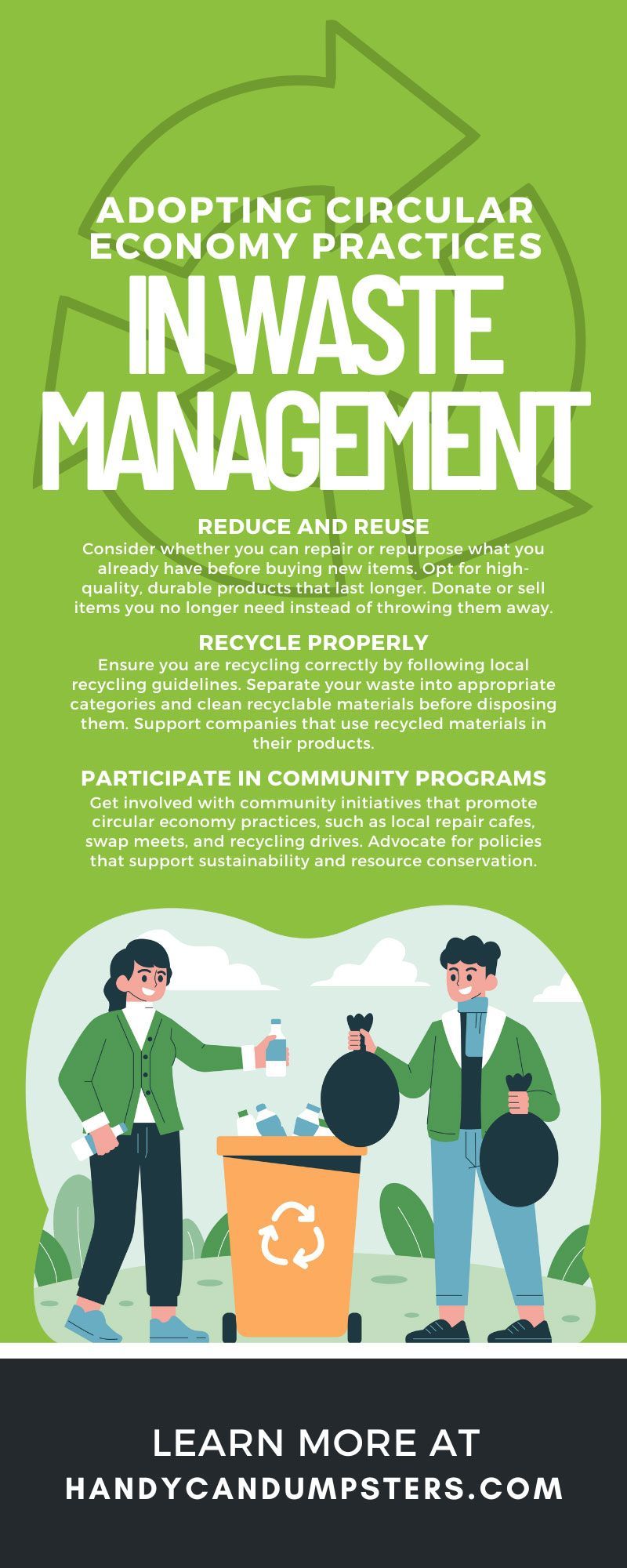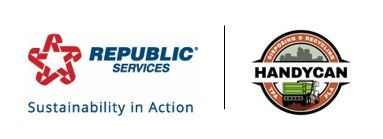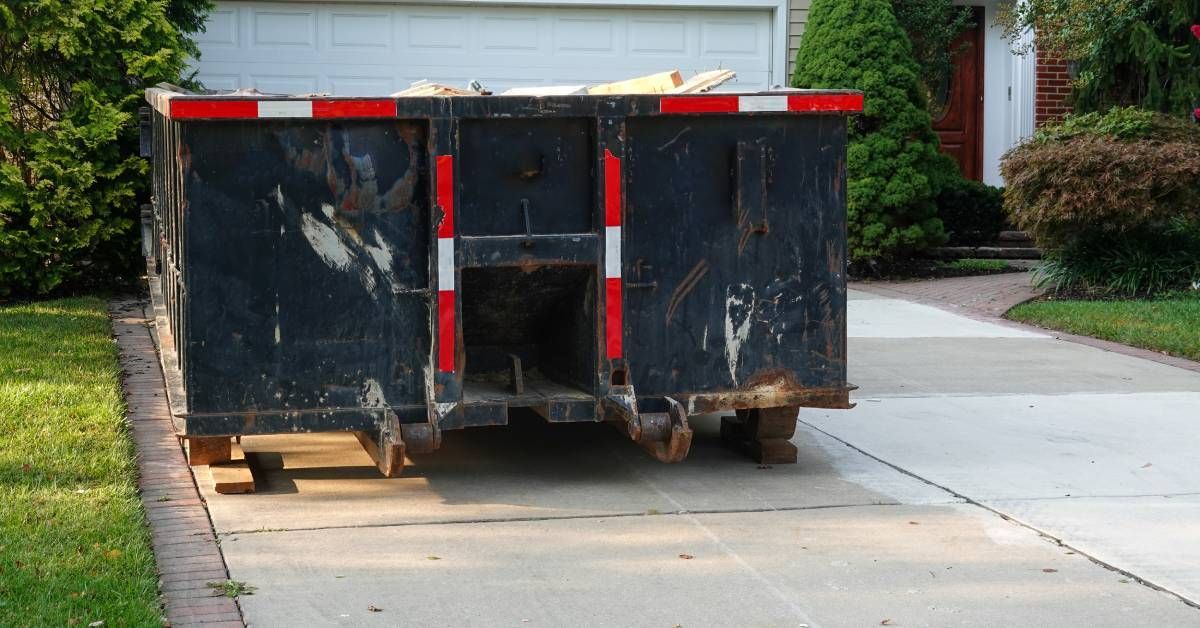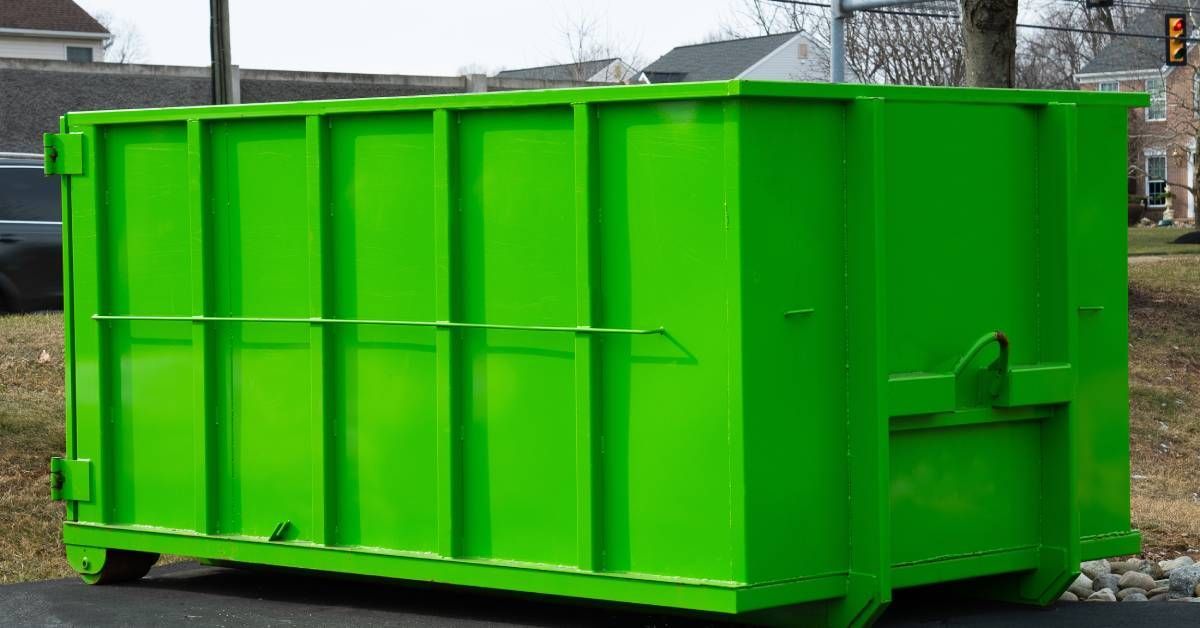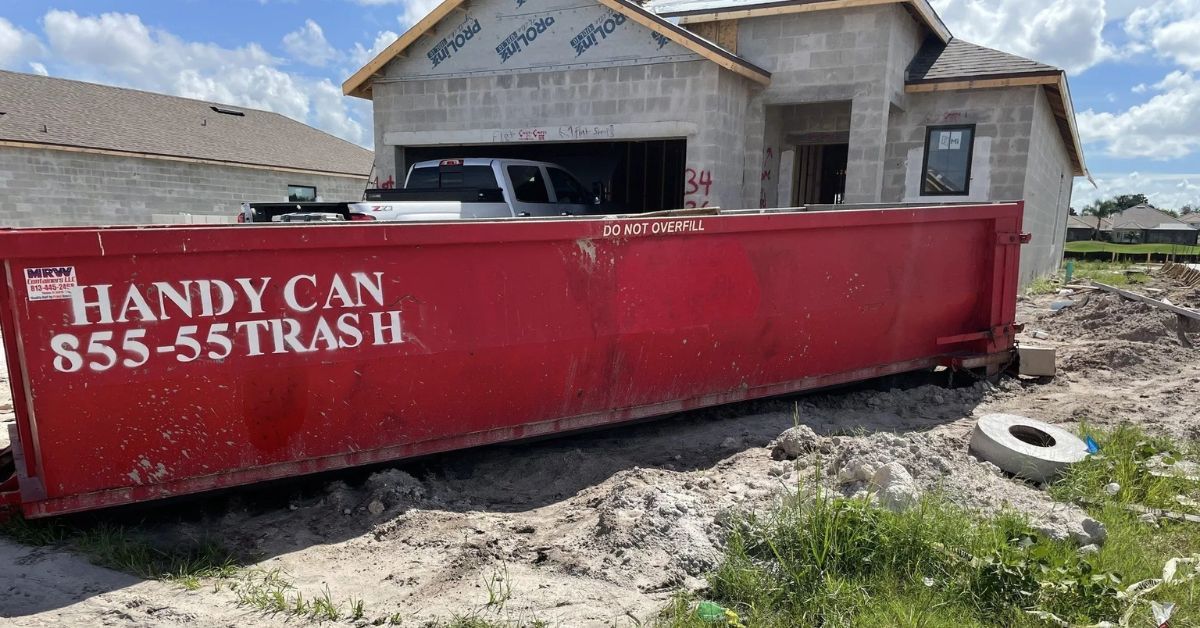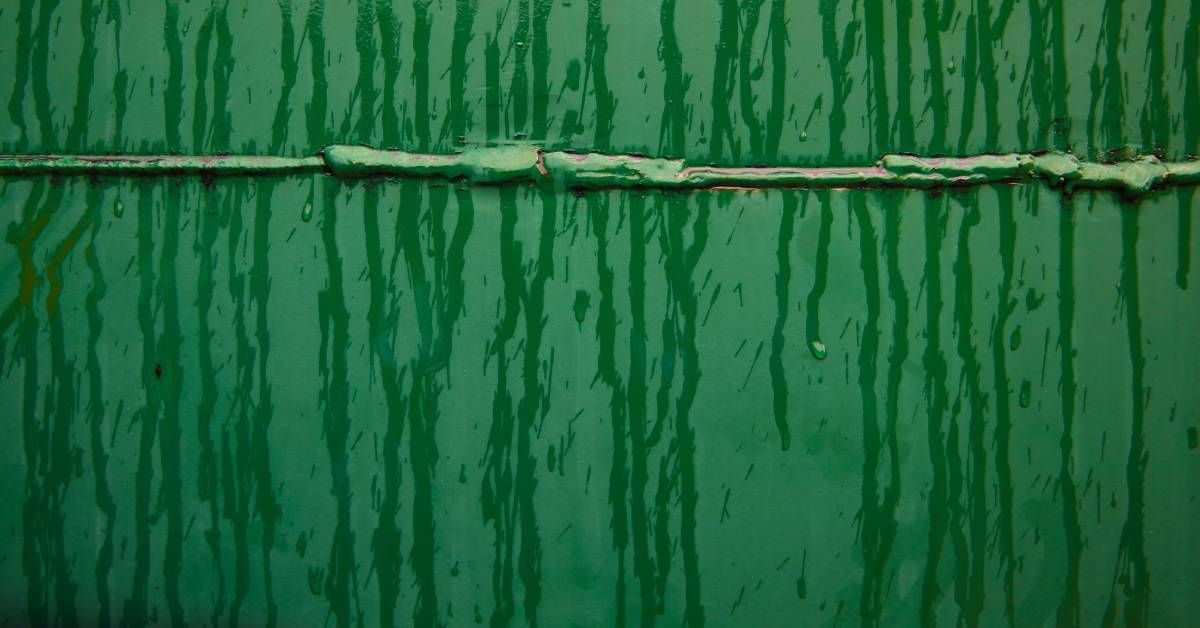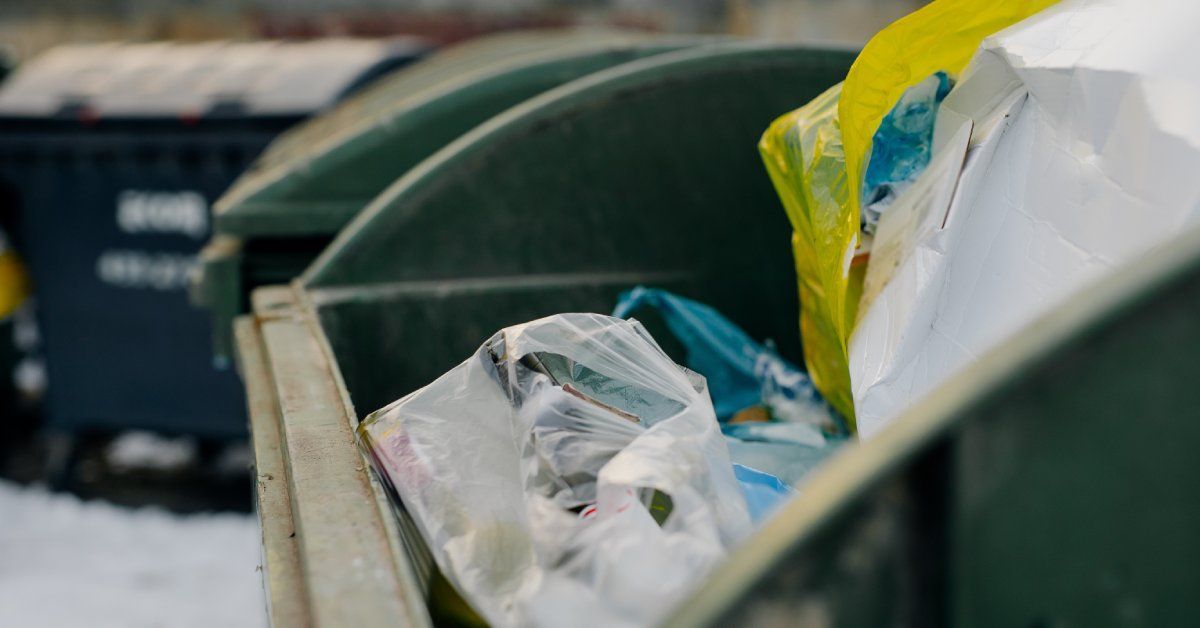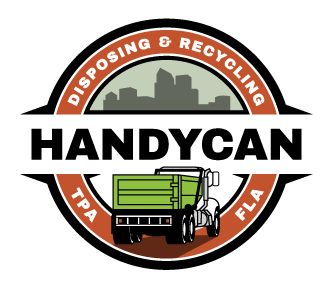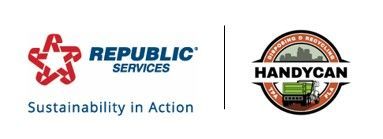Adopting Circular Economy Practices in Waste Management
The traditional linear economy—take, make, dispose—has led to significant environmental challenges. It’s an unsustainable approach that results in enormous waste and resource depletion. Enter the circular economy, a transformative model to reduce waste, conserve resources, and promote sustainability. Waste management is not an afterthought but a core principle in a circular economy. We can create a more sustainable future by adopting circular economy practices in waste management and continuously repurposing materials.
The Principles of a Circular Economy
Understanding the principles of the circular economy is crucial for effectively implementing sustainable waste management practices. These principles are the foundation for transforming our current systems and processes into more efficient, resource-conscious models. Adhering to these guiding principles can reduce our environmental impact, enhance resource productivity, and foster economic growth. Below, we explore the core principles that drive the circular economy and their significance in revamping waste management.
Designing Out Waste
This approach focuses on creating durable, repairable, and easily disassembled products for recycling. Companies use materials that they can return safely to the environment or transform into new products. We can significantly reduce the environmental impact of our consumption by designing out waste.
Keeping Products and Materials in Use
This method involves extending the lifecycle of products through maintenance, repair, refurbishment, and recycling. Instead of discarding items after their initial use, we can find ways to keep them in circulation. This idea reduces the need for new resources and minimizes waste.
Regenerating Natural Systems
This third principle encourages companies to adopt practices that restore and enhance the environment rather than deplete it. For instance, using biodegradable materials that enrich the soil or implementing agricultural techniques that improve biodiversity. We create a more resilient ecosystem to sustain future generations by regenerating natural systems.
How Individuals Can Contribute to a Circular Economy
Adopting circular economy practices isn’t just for businesses; individuals can also play a significant role. Here’s how you can contribute.
Reduce and Reuse
Consider whether you can repair or repurpose what you already have before buying new items. Opt for high-quality, durable products that last longer. Donate or sell items you no longer need instead of throwing them away.
Recycle Properly
Ensure you are recycling correctly by following local recycling guidelines. Separate your waste into appropriate categories and clean recyclable materials before disposing them. Support companies that use recycled materials in their products.
Participate in Community Programs
Get involved with community initiatives that promote circular economy practices, such as local repair cafes, swap meets, and recycling drives. Advocate for policies that support sustainability and resource conservation.
The Benefits of a Circular Economy
The shift from a linear to a circular economy presents many benefits spanning environmental, economic, and social dimensions. We can significantly mitigate the adverse impacts of our current consumption patterns by embracing circular practices.
Environmental Benefits
We can drastically reduce the volume of waste in landfills and incinerators by designing products for reuse, repair, and recycling. Additionally, these practices reduce greenhouse gas emissions and the emission of other pollutants, combating climate change and improving air quality. We contribute to biodiversity, enrich ecosystems, and support the planet’s health by regenerating natural systems.
Economic Benefits
Economically, the circular economy can drive innovation and create new business opportunities. Companies that adopt circular principles are leaders in sustainability, which can enhance brand reputation and customer loyalty. Focusing on resource efficiency can lead to cost savings for businesses and consumers alike. Companies can reduce operational costs while offering consumers products that provide greater value over their lifetimes by making better use of materials and energy. Job creation is another critical economic benefit, particularly in recycling, refurbishment, and sustainable design sectors.
Social Benefits
On a social level, the circular economy promotes a more equitable distribution of resources. We can help close the gap between different socio-economic groups by making products more durable and accessible through resale and donation programs. Community-based initiatives will foster community and collaboration. This partnership empowers individuals to take collective action toward sustainability. Furthermore, the circular economy encourages a shift in mindset from ownership to access, promoting more sustainable consumption patterns.
The transition to a circular economy offers a comprehensive solution to many pressing challenges. It promises to protect our environment, stimulate economic growth, and enhance social well-being. Committing to circular practices can pave the way for a more sustainable and prosperous future.
Technology’s Role in Advancing Circular Economy Solutions
Technology is a powerful enabler of the circular economy. Here are some ways it is making a difference.
Digital Platforms
Digital platforms connect consumers with services that extend the life of products. Certain apps facilitate food sharing and reduce waste. Other platforms promote second-hand clothing sales.
Advanced Recycling Techniques
Innovations in recycling technology are making it possible to reclaim a broader range of materials with higher efficiency. Chemical recycling, for instance, can break down plastics into their original components for reuse.
Internet of Things (IoT)
IoT devices help track and manage resources more efficiently. Smart bins can monitor waste levels and optimize collection routes, reducing unnecessary transportation emissions. IoT sensors in products can provide data on usage patterns, informing design improvements for durability and recyclability.
Challenges and Future Trends
While the benefits of the circular economy are clear, implementing these practices comes with challenges.
Economic Barriers
The transition to a circular economy requires significant upfront investment. Businesses and governments must find ways to finance this shift and incentivize sustainable practices.
Regulatory Hurdles
Regulatory frameworks often lag behind technological advancements. Policymakers must create regulations that support circular economy initiatives and address the complexities of waste management.
Consumer Behavior
Changing consumer behavior is crucial for the circular economy’s success. Education and awareness campaigns can help people understand the importance of reducing waste and making sustainable choices.
Future Trends
Despite these challenges, the future of the circular economy is promising. We expect increased collaboration between businesses, governments, and consumers. Emerging technologies will continue to provide innovative solutions for waste management. More individuals and organizations will adopt circular economy practices as awareness grows, driving us closer to a sustainable future.
Closing Thoughts
Adopting circular economy practices in waste management is not just a choice—it’s a necessity for a sustainable future. We can significantly reduce our environmental footprint by designing out waste, keeping products in use, and regenerating natural systems. Businesses and individuals alike have a role to play in this transformation. With the collective effort of eco-conscious consumers and forward-thinking companies, we can create a more sustainable and resilient world.
Are you ready to make a difference? Join Handy Can in adopting circular economy practices and participate in the solution. We offer residential and commercial dumpster services that help homeowners and contractors keep dirt and debris off the streets. We also do our part in recycling. Together, we can build a sustainable future for generations to come.
